Pia Fries
03 Feb - 09 Jul 2023
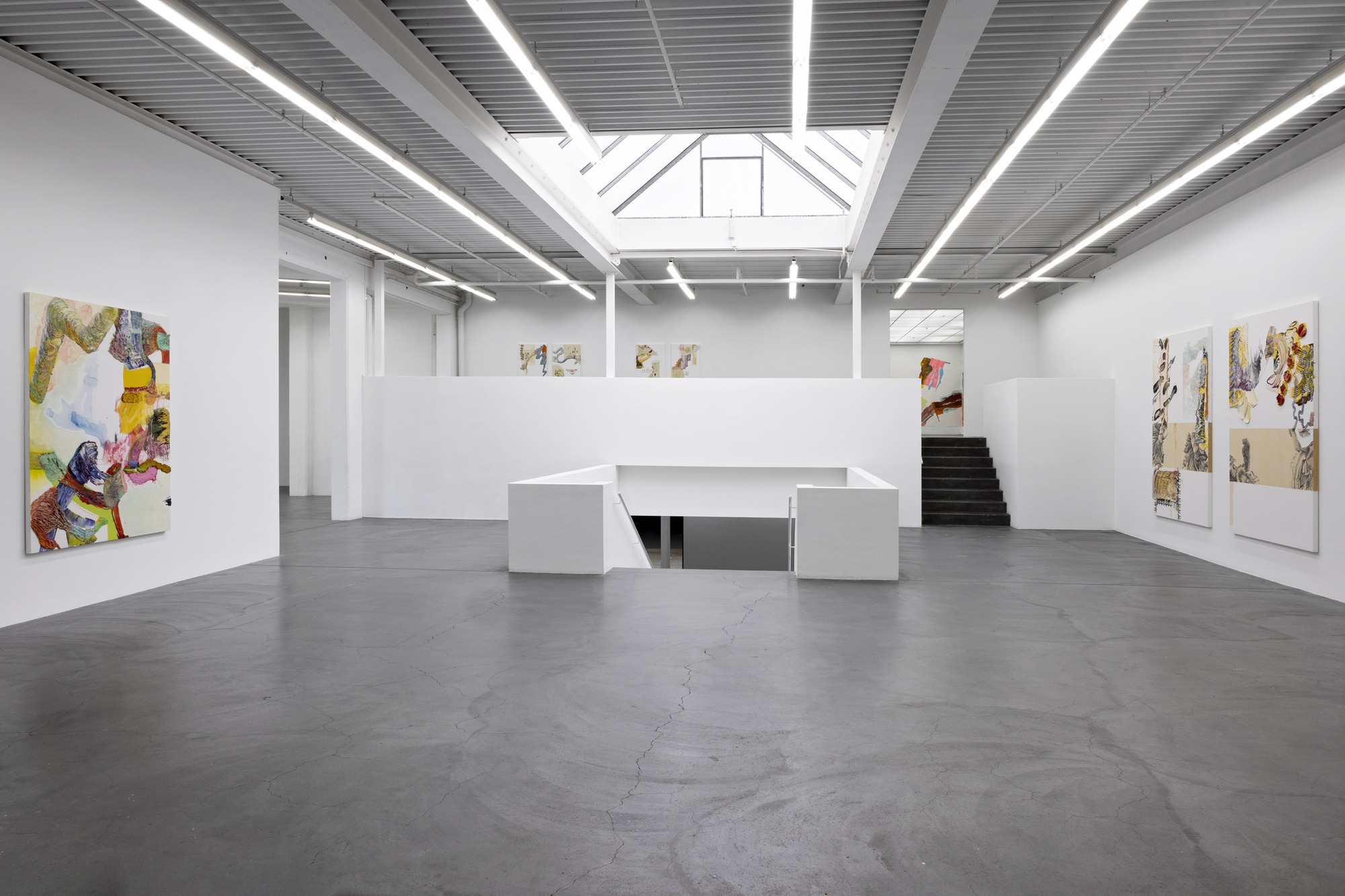
Pia Fries, bitu, 1995. 200 x 170 cm, Ölfarbe auf Holz; schwarze blumen erucarum ortus, 2005, je 240 x 170 cm. Ölfarbe, Siebdruck, Holz. Courtesy: Pia Fries.
Ausstellungsansicht / Installation view Kunsthaus Baselland 2023. Foto / Photo: Gina Folly
© Pia Fries / 2023 ProLitteris, Zürich
Ausstellungsansicht / Installation view Kunsthaus Baselland 2023. Foto / Photo: Gina Folly
© Pia Fries / 2023 ProLitteris, Zürich
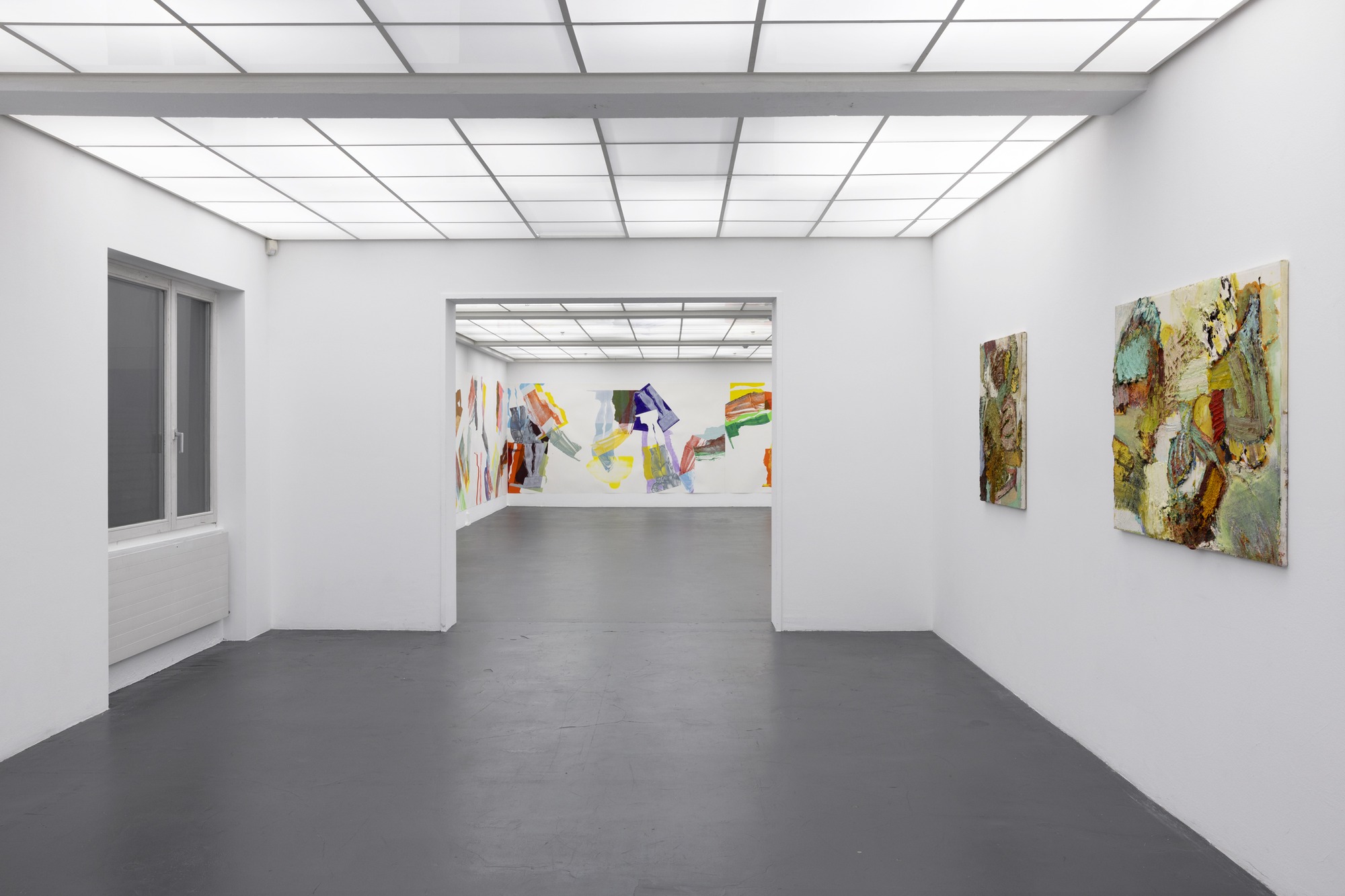
Pia Fries, billin, 1991; vok, 1992. Ölfarbe auf Leinwand über Holz. Courtesy: Pia Fries.
Ausstellungsansicht / Installation view Kunsthaus Baselland 2023. Foto / Photo: Gina Folly
© Pia Fries / 2023 ProLitteris, Zürich
Ausstellungsansicht / Installation view Kunsthaus Baselland 2023. Foto / Photo: Gina Folly
© Pia Fries / 2023 ProLitteris, Zürich
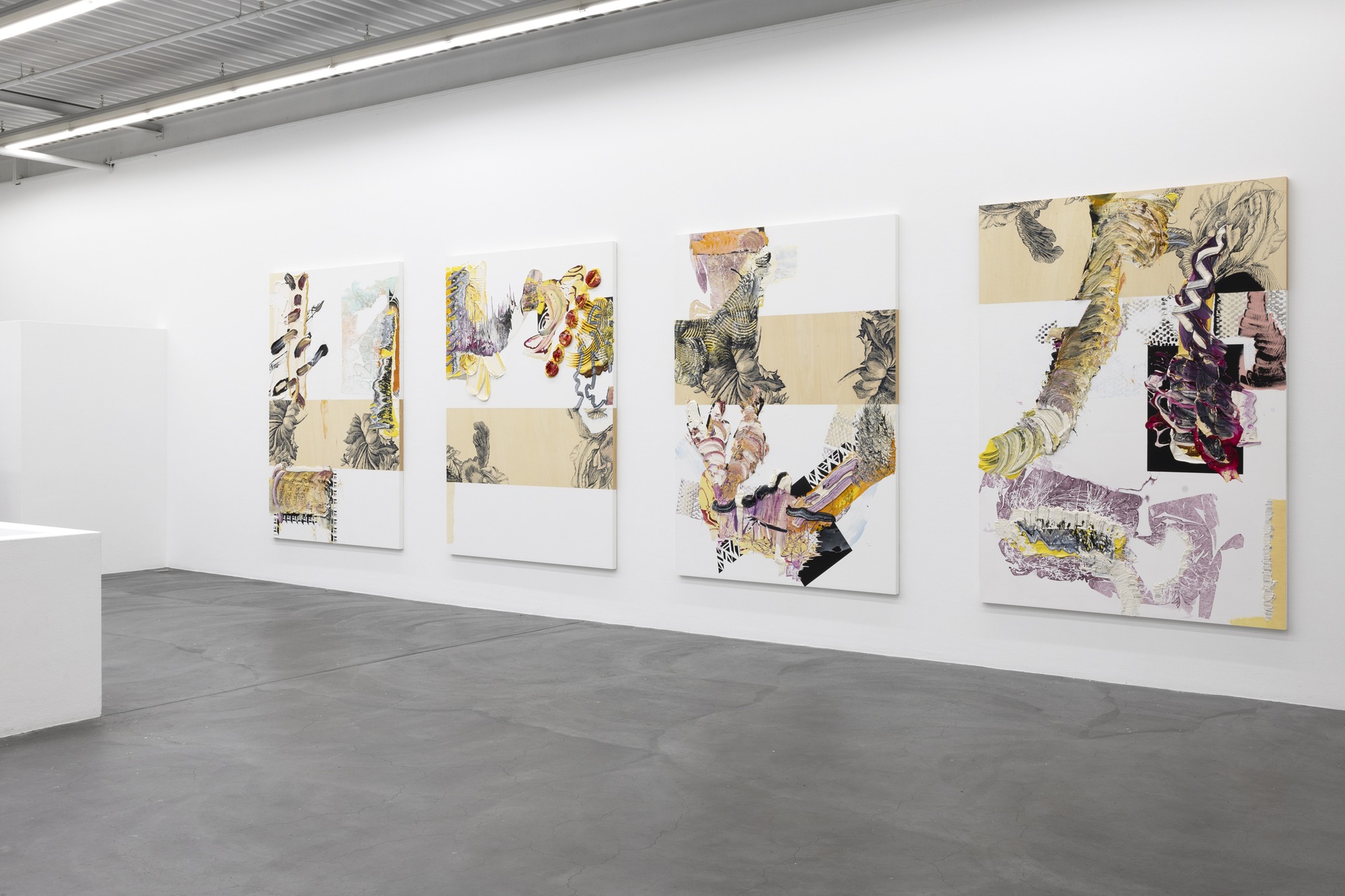
Pia Fries, schwarze blumen erucarum ortus, 2005, je 240 x 170 cm. Ölfarbe, Siebdruck, Holz. Courtesy: Pia Fries.
Ausstellungsansicht / Installation view Kunsthaus Baselland 2023. Foto / Photo: Gina Folly
© Pia Fries / 2023 ProLitteris, Zürich
Ausstellungsansicht / Installation view Kunsthaus Baselland 2023. Foto / Photo: Gina Folly
© Pia Fries / 2023 ProLitteris, Zürich
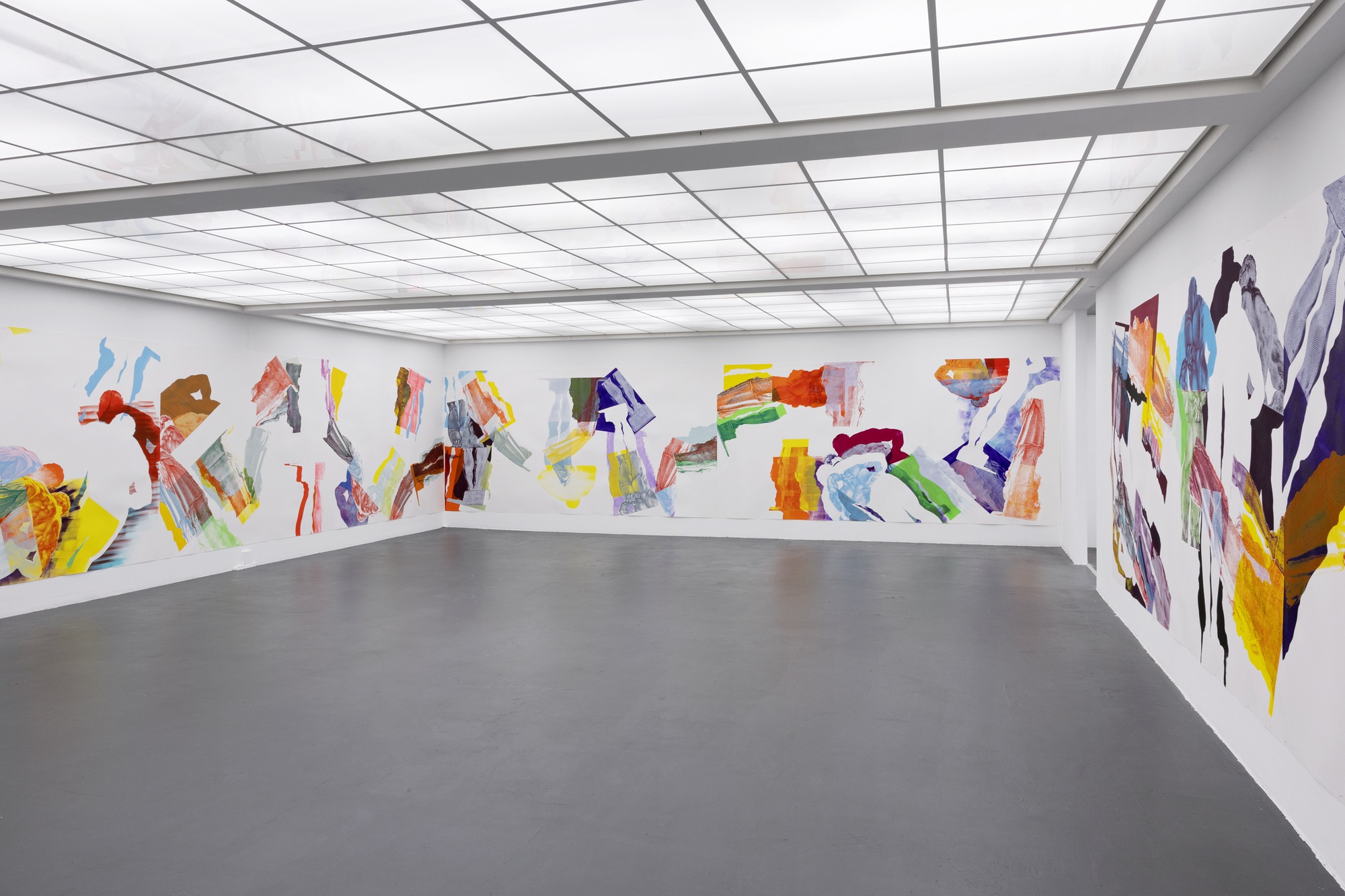
Pia Fries, durch sieben siebe, 2022. Acryl auf Papier, ortsspezifische Installation. Courtesy: Pia Fries, Mai 36 Galerie, Zürich, Miles McEnery Gallery New York.
Ausstellungsansicht / Installation view Kunsthaus Baselland 2023. Foto / Photo: Gina Folly
© Pia Fries / 2023 ProLitteris, Zürich
Ausstellungsansicht / Installation view Kunsthaus Baselland 2023. Foto / Photo: Gina Folly
© Pia Fries / 2023 ProLitteris, Zürich
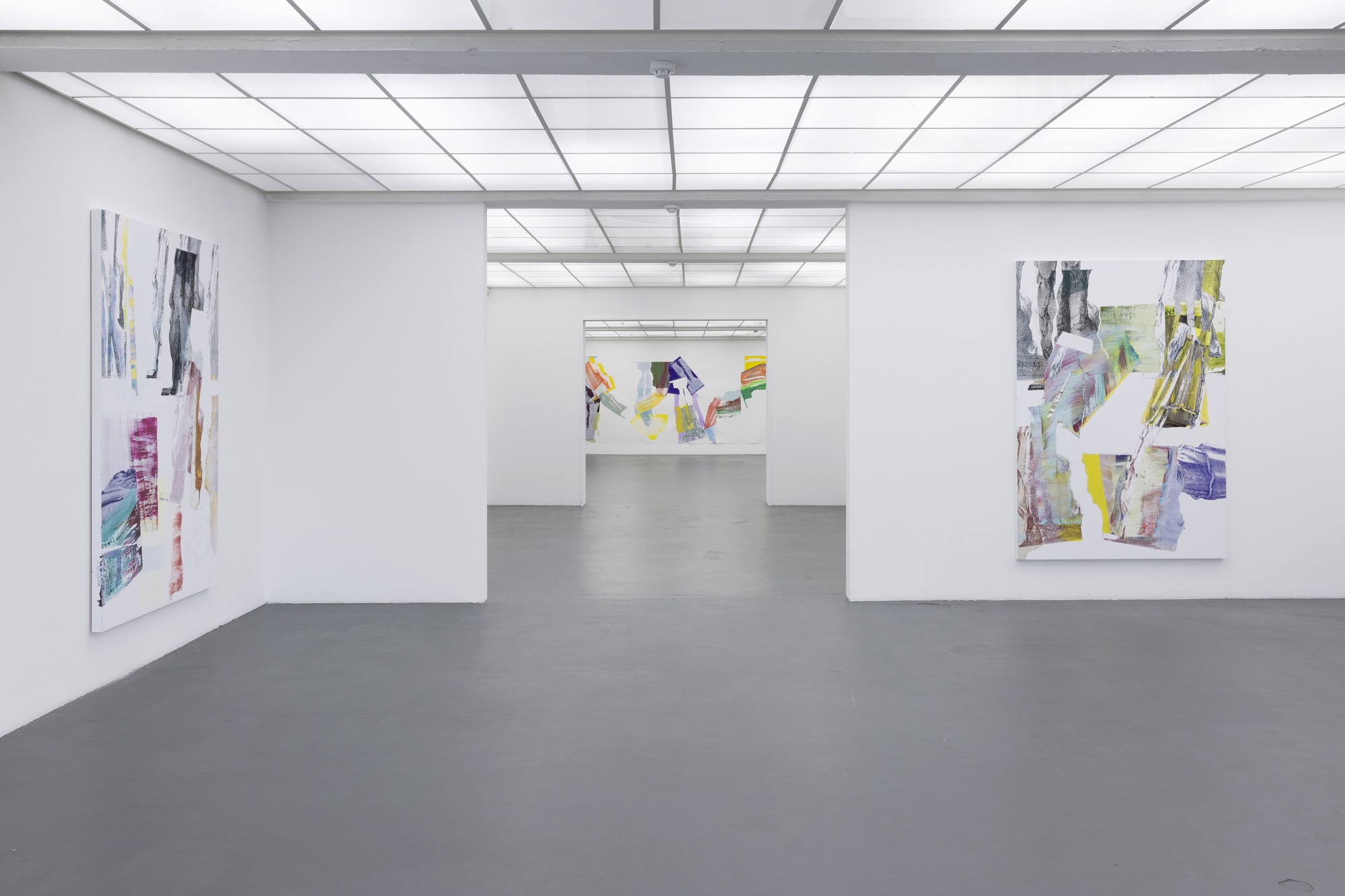
front: Pia Fries, quintopylon 2, 4, 2020. Ölfarbe und Siebdruck auf Holz, je 200 x 140
Courtesy: Sammlung Kunstmuseum Bonn
back: Pia Fries, durch sieben siebe, 2022. Acryl auf Papier, ortsspezifische Installation. Courtesy: Pia Fries, Mai 36 Galerie, Zürich, Miles McEnery Gallery New York.
Ausstellungsansicht / Installation view Kunsthaus Baselland 2023. Foto / Photo: Gina Folly
© Pia Fries / 2023 ProLitteris, Zürich
Courtesy: Sammlung Kunstmuseum Bonn
back: Pia Fries, durch sieben siebe, 2022. Acryl auf Papier, ortsspezifische Installation. Courtesy: Pia Fries, Mai 36 Galerie, Zürich, Miles McEnery Gallery New York.
Ausstellungsansicht / Installation view Kunsthaus Baselland 2023. Foto / Photo: Gina Folly
© Pia Fries / 2023 ProLitteris, Zürich
Numerous catalogs have been published since Pia Fries began creating and exhibiting her art in the 1980s. The long list of places where her multi-award-winning work has been exhibited includes venues in Germany, France, Switzerland, Italy, and the United States. Each exhibition adds new nuances to her oeuvre; no two catalogs are alike. The series of works that the Swiss-born, Düsseldorf-based artist has been continuously developing and updating since the 1980s always yield something new, unknown elements that we have not seen before. Routine is not an option. Pia Fries creates a myriad of works, ideas, forms, and possibilities—whose timeliness is paramount.
During the preparations for our exhibition at Kunsthaus Baselland, I met the artist in the Düsseldorf studio that has served as her base for many years. She first came to the city in the 1980s to study at the Kunstakademie Düsseldorf, where she graduated as a postgraduate student of Gerhard Richter. Prior to it, Fries studied sculpture under Anton Egloff at the Lucerne School of Art and Design. Two important aspects that have characterized her work since the beginning seem to converge at this point: three-dimensional creation, which molds material and grows into space in a manner comparable to sculpture, and the painterly gesture, which determines surfaces, chromaticity, and rhythms while appropriating, traversing, formulating, and seizing pictorial supports. The force and energy of all her painterly works, their plasticity and also density, which simultaneously requires real space as an echo chamber, seem to stem precisely from this artistic fusion.
This is also evident across the spaces of Pia Fries’s light-filled studio. Her large-format paintings—mostly executed in oil on a wooden support and which have for a long time exceeded the artist’s bodily dimensions—are handled, moved, and turned around by the artist with a firm grip. This activity occurs not only to create space for the next stage in the process and enable the painter to simultaneously develop series of works. When the artist turns her works around, moves them, takes a step back, emphasizes a particular element again, sometimes paints it over, determines things from above and below, gets rid of a given section, then finally gives the work its definitive strokes, we are witnessing an important step in the overall creative process. And this approach already reveals a great deal about Pia Fries’s practice and artistic handwriting. Rather than a fixed underlying plan, it is the work itself, what emerges in its making, that determines its final direction. Pia Fries says that it is the painting that steers and directs her. It is a mutual back and forth, a process of drifting apart and coming back together, becoming part of each other
again.
We are reminded of the rather dark, almost earth-toned paintings from the 1980s, which were then executed on smaller pictorial supports. For these, Pia Fries applied painterly material using varying degrees of condensation and layering onto different media, taking the paint right up to the works’ edges and even beyond them, without or with only a few white areas. In this completed group of works in particular, which nevertheless has a strong connection to the present reality of Pia Fries’ practice, painting may have solidified as the creation of a painterly, material body. It goes hand in hand with working and also manipulating the oil paint on different surfaces like unprimed cotton, linen, wood, and burlap with brushes, spatulas, or rakes. The material flows, gets knocked, twisted, dries.
Since the beginning, Pia Fries has not been interested in a narrative approach that only knows a single (reading) direction. Rather than shying away from ambiguity, the chosen titles resonate with dynamics and possibilities: bric-à-brac, wood engraving, zorten, forest. This is a decided striving for the presence of texture, color, paint application, as well as for power, energy, and primarily for a reality that is inviting—towards visual probing, excavating, becoming immersed.
According to the artist, “there is a constant movement in my interaction with the world, with painting, and this also applies to the questioning, surveying gaze into the pictorial space and time.” From the outset, Pia Fries’s artistic work has been based on a profound openness to the process as well as on an appreciation of elements that can emerge, prosper, but also be discarded. Although conceptually there is always a next step, the artist consistently lets herself be guided by the material at hand, by things that happen spontaneously or even by chance. The white pictorial space in her paintings, which became increasingly present in the 1990s and into the 2000s, has taken on yet another important quality within her practice: the incorporation of the actual physical environment.
Her new works, which are now on view at Kunsthaus Baselland and elsewhere, bear witness to this very fact. To create them, Pia Fries has used paper strips that are several meters long and high, adding silkscreen prints to them in certain areas. For this purpose, the artist has chosen fragments and abbreviations from the famous engraving Farnese Hercules by Hendrick Goltzius, subsequently applying extra layers of paint to them. Due to the sheer size of the thick paper strips, this kind of work can only be executed in stages. The dynamics and vitality, but also the physicality of the line in a Goltzius copperplate engraving, or likewise in another group of works executed by Maria Sibylla Merian, are exactly what interests Pia Fries in her form of painterly quotation.
But we would not do justice to the artist or her work if we were to see a mere formal interest in how she revisits historical pictorial quotations or adds images and photographs through the silkscreen process. Rather, we can reach the core of Pia Fries’s work by engaging with her exploration of the male body prototype à la Goltzius or Merian’s observations of nature and metamorphoses, which have long been underestimated. Pia Fries injects a sense of urgency into each work thanks to the tremendous energy that underlies every piece, by always taking up something preexisting in order to lead it into a different state and therefore unveil its contemporary relevance. We see an acknowledgment of states and narratives that does not become itself narrativized, a serious consideration of a physical surface that is directly connected to the real environment and can cause it to resonate.
In a time like the present, which is experienced as crisis-ridden, fragile, uncertain, and challenging, which represents an upheaval and yet could be better defined as an in-between time—between not-anymore and also not-yet—our physical and acting presence in real community-building is more important than ever. Accordingly, it is absolutely urgent to create places with a physical quality, as art enables us to do. We should accept this invitation. (IG)
Pia Fries (b. 1955 in Beromünster, Switzerland) lives and works in Düsseldorf, Germany. Her works have been shown in several solo exhibitions, including at Kunstpalast Düsseldorf (2019), Musée d’Art moderne
de la Ville de Paris (2018), Museum Kurhaus Kleve (2017), Kunstplattform AKKU Luzern (2015), Staatliche Kunsthalle Karlsruhe (2010), and Kunstmuseum Winterthur/Josef Albers Museum Quadrat Bottrop (2007). She has also participated in major group exhibitions, such as La Biennale di Venezia: 48 (1999), Beau Mond—The 4th International Biennial, SITE Santa Fe (2001), and Diversity United, Flughafen Tempelhof, Berlin & New Tretyakov Gallery, Moscow (2021). She has been the recipient of numerous prizes and awards, including the Nordmann Prize, Canton of Lucerne (1992), Fred Thieler Prize, Berlinische Galerie Berlin (2009), and Gerhard Altenbourg Prize, Lindenau Museum Altenburg—all of which were accompanied by a solo exhibition. Works by Pia Fries are held in a large number of public and private collections.
For the support of the exhibition we would like to thank the Hans and Renée Müller Meylan Stiftung, the Hans and Monika Furer-Brunner Stiftung, as well as the annual partners of Kunsthaus Baselland and the members of Kunstverein Baselland. Furthermore, the artist would like to thank Hans Brändli, Finn Curry, Oliver Minder and the team of Kunsthaus Baselland for the realization of the exhibition.
Artist Talk
Thursday, 23 March, 6.30 pm
Tour through the exhibition with Pia Fries and Ines Goldbach
Further events at kunsthausbaselland.ch
During the preparations for our exhibition at Kunsthaus Baselland, I met the artist in the Düsseldorf studio that has served as her base for many years. She first came to the city in the 1980s to study at the Kunstakademie Düsseldorf, where she graduated as a postgraduate student of Gerhard Richter. Prior to it, Fries studied sculpture under Anton Egloff at the Lucerne School of Art and Design. Two important aspects that have characterized her work since the beginning seem to converge at this point: three-dimensional creation, which molds material and grows into space in a manner comparable to sculpture, and the painterly gesture, which determines surfaces, chromaticity, and rhythms while appropriating, traversing, formulating, and seizing pictorial supports. The force and energy of all her painterly works, their plasticity and also density, which simultaneously requires real space as an echo chamber, seem to stem precisely from this artistic fusion.
This is also evident across the spaces of Pia Fries’s light-filled studio. Her large-format paintings—mostly executed in oil on a wooden support and which have for a long time exceeded the artist’s bodily dimensions—are handled, moved, and turned around by the artist with a firm grip. This activity occurs not only to create space for the next stage in the process and enable the painter to simultaneously develop series of works. When the artist turns her works around, moves them, takes a step back, emphasizes a particular element again, sometimes paints it over, determines things from above and below, gets rid of a given section, then finally gives the work its definitive strokes, we are witnessing an important step in the overall creative process. And this approach already reveals a great deal about Pia Fries’s practice and artistic handwriting. Rather than a fixed underlying plan, it is the work itself, what emerges in its making, that determines its final direction. Pia Fries says that it is the painting that steers and directs her. It is a mutual back and forth, a process of drifting apart and coming back together, becoming part of each other
again.
We are reminded of the rather dark, almost earth-toned paintings from the 1980s, which were then executed on smaller pictorial supports. For these, Pia Fries applied painterly material using varying degrees of condensation and layering onto different media, taking the paint right up to the works’ edges and even beyond them, without or with only a few white areas. In this completed group of works in particular, which nevertheless has a strong connection to the present reality of Pia Fries’ practice, painting may have solidified as the creation of a painterly, material body. It goes hand in hand with working and also manipulating the oil paint on different surfaces like unprimed cotton, linen, wood, and burlap with brushes, spatulas, or rakes. The material flows, gets knocked, twisted, dries.
Since the beginning, Pia Fries has not been interested in a narrative approach that only knows a single (reading) direction. Rather than shying away from ambiguity, the chosen titles resonate with dynamics and possibilities: bric-à-brac, wood engraving, zorten, forest. This is a decided striving for the presence of texture, color, paint application, as well as for power, energy, and primarily for a reality that is inviting—towards visual probing, excavating, becoming immersed.
According to the artist, “there is a constant movement in my interaction with the world, with painting, and this also applies to the questioning, surveying gaze into the pictorial space and time.” From the outset, Pia Fries’s artistic work has been based on a profound openness to the process as well as on an appreciation of elements that can emerge, prosper, but also be discarded. Although conceptually there is always a next step, the artist consistently lets herself be guided by the material at hand, by things that happen spontaneously or even by chance. The white pictorial space in her paintings, which became increasingly present in the 1990s and into the 2000s, has taken on yet another important quality within her practice: the incorporation of the actual physical environment.
Her new works, which are now on view at Kunsthaus Baselland and elsewhere, bear witness to this very fact. To create them, Pia Fries has used paper strips that are several meters long and high, adding silkscreen prints to them in certain areas. For this purpose, the artist has chosen fragments and abbreviations from the famous engraving Farnese Hercules by Hendrick Goltzius, subsequently applying extra layers of paint to them. Due to the sheer size of the thick paper strips, this kind of work can only be executed in stages. The dynamics and vitality, but also the physicality of the line in a Goltzius copperplate engraving, or likewise in another group of works executed by Maria Sibylla Merian, are exactly what interests Pia Fries in her form of painterly quotation.
But we would not do justice to the artist or her work if we were to see a mere formal interest in how she revisits historical pictorial quotations or adds images and photographs through the silkscreen process. Rather, we can reach the core of Pia Fries’s work by engaging with her exploration of the male body prototype à la Goltzius or Merian’s observations of nature and metamorphoses, which have long been underestimated. Pia Fries injects a sense of urgency into each work thanks to the tremendous energy that underlies every piece, by always taking up something preexisting in order to lead it into a different state and therefore unveil its contemporary relevance. We see an acknowledgment of states and narratives that does not become itself narrativized, a serious consideration of a physical surface that is directly connected to the real environment and can cause it to resonate.
In a time like the present, which is experienced as crisis-ridden, fragile, uncertain, and challenging, which represents an upheaval and yet could be better defined as an in-between time—between not-anymore and also not-yet—our physical and acting presence in real community-building is more important than ever. Accordingly, it is absolutely urgent to create places with a physical quality, as art enables us to do. We should accept this invitation. (IG)
Pia Fries (b. 1955 in Beromünster, Switzerland) lives and works in Düsseldorf, Germany. Her works have been shown in several solo exhibitions, including at Kunstpalast Düsseldorf (2019), Musée d’Art moderne
de la Ville de Paris (2018), Museum Kurhaus Kleve (2017), Kunstplattform AKKU Luzern (2015), Staatliche Kunsthalle Karlsruhe (2010), and Kunstmuseum Winterthur/Josef Albers Museum Quadrat Bottrop (2007). She has also participated in major group exhibitions, such as La Biennale di Venezia: 48 (1999), Beau Mond—The 4th International Biennial, SITE Santa Fe (2001), and Diversity United, Flughafen Tempelhof, Berlin & New Tretyakov Gallery, Moscow (2021). She has been the recipient of numerous prizes and awards, including the Nordmann Prize, Canton of Lucerne (1992), Fred Thieler Prize, Berlinische Galerie Berlin (2009), and Gerhard Altenbourg Prize, Lindenau Museum Altenburg—all of which were accompanied by a solo exhibition. Works by Pia Fries are held in a large number of public and private collections.
For the support of the exhibition we would like to thank the Hans and Renée Müller Meylan Stiftung, the Hans and Monika Furer-Brunner Stiftung, as well as the annual partners of Kunsthaus Baselland and the members of Kunstverein Baselland. Furthermore, the artist would like to thank Hans Brändli, Finn Curry, Oliver Minder and the team of Kunsthaus Baselland for the realization of the exhibition.
Artist Talk
Thursday, 23 March, 6.30 pm
Tour through the exhibition with Pia Fries and Ines Goldbach
Further events at kunsthausbaselland.ch
